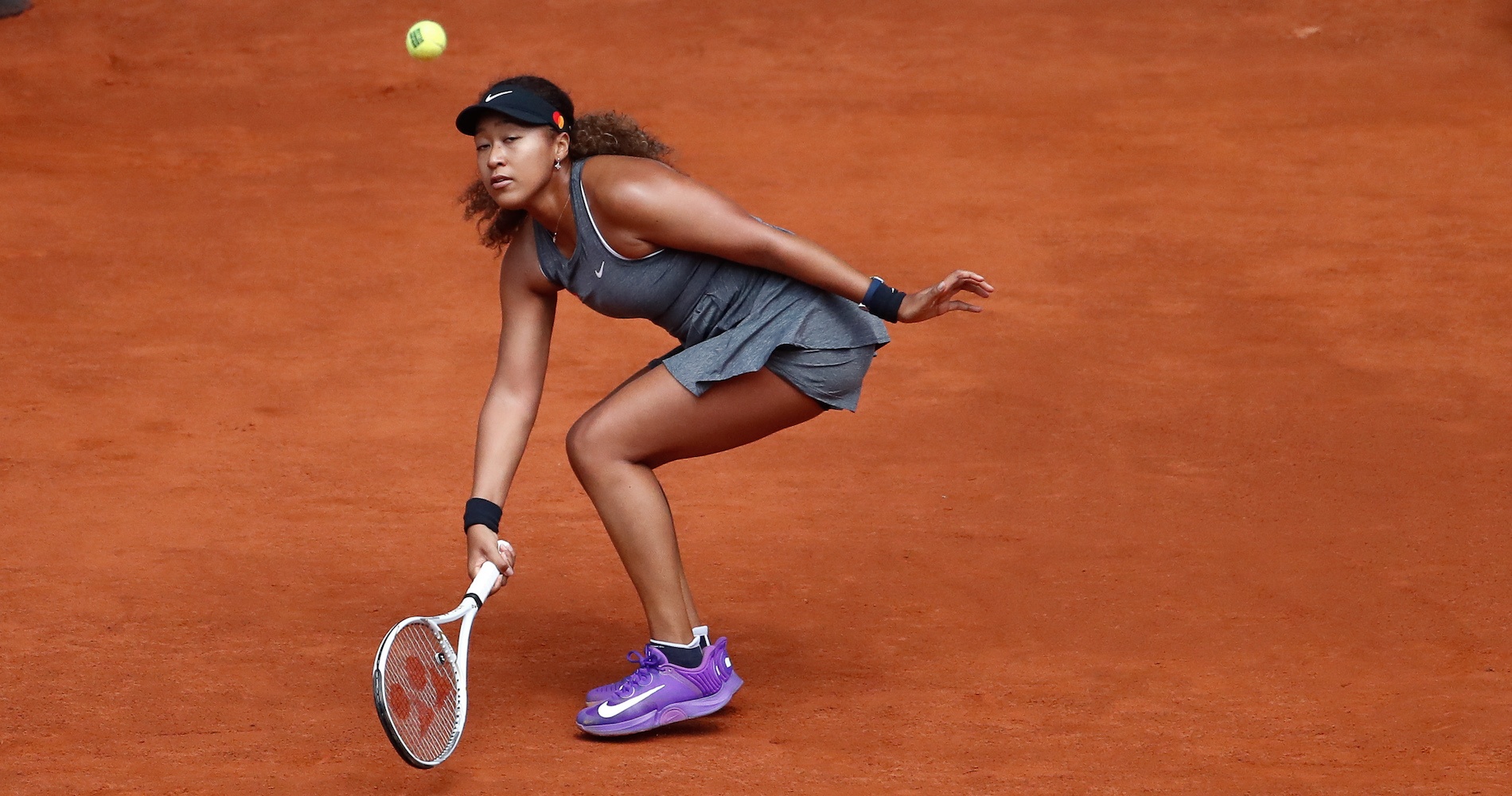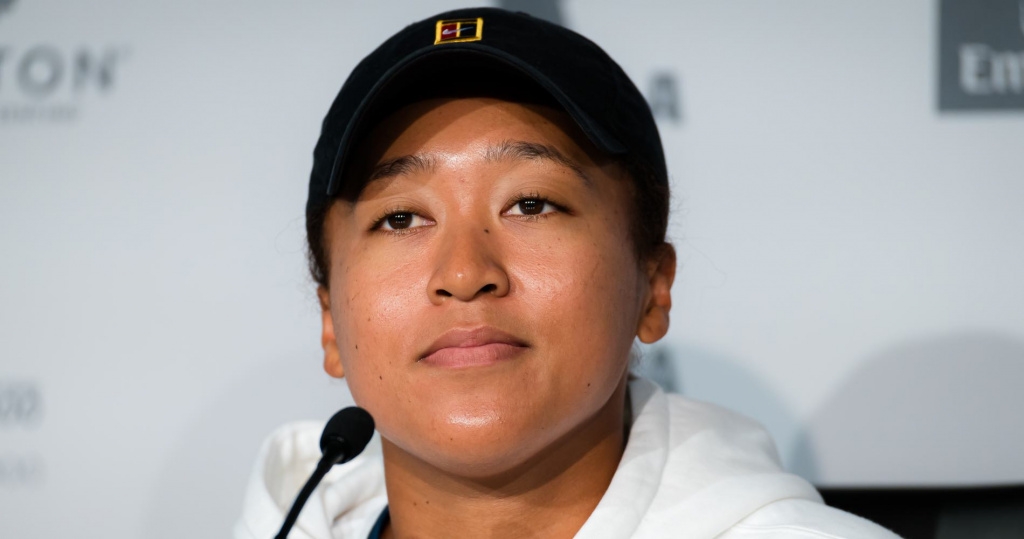Experience on clay, specific drills, Sharapova’s example; how Osaka is setting her sights on Roland-Garros
Almost two years after her last clay-court match, Naomi Osaka made a winning start in Madrid on Friday on a surface she knows will take time to master
 © Panoramic
© Panoramic
Champions adjust, as Billie Jean King famously said. World No 2 Naomi Osaka reacquainted herself with a clay court on Friday, her first match on it in almost two years ending in a well-earned 7-5, 6-2 victory over her fellow Japanese Misaki Doi, the world No 83, in the first round of the Mutua Madrid Open.
https://www.tennismajors.com/videos/osaka-recovers-from-slow-start-on-clay-court-return
Doi, who took a set off eventual champion Osaka in the first round at the US Open last September, made Osaka work hard, breaking early and having points for a 3-0 lead. Osaka fought back well and though she failed to serve out the opener at 5-4, she made no mistake second time round and pulled away in the second set for a convincing victory.
“I feel like I started playing better in the second set, so movement-wise it can only get better and hopefully as I put in more hours on the court it will just keep improving,” she said.
Back on the clay, back with a win 💪
🇯🇵 @naomiosaka defeats fellow countrywoman Doi 7-5, 6-2 to reach Round 2 in Madrid, where she will face Muchova!#MMOPEN pic.twitter.com/YqJKppHTY7
— wta (@WTA) April 30, 2021
Maturing Osaka in good place, mentally
The last time Osaka was on a clay-court was in May 2019, when she was beaten in the third round at Roland-Garros by Katerina Siniakova. At the time, the burden of being world No 1 was something Osaka felt very heavily on her shoulders, the expectations, as much as the nuances of a clay-court the issue as she went out early.
Two years on, with two more Grand Slam titles under her belt, Osaka is a different woman, more confident, more assured on and off the court, having found her voice through the Black Lives Matter movement. After winning the Australian Open in February, she reached the quarter-finals in Miami but took a little time off to refresh and arrived in Madrid looking forward to the challenge of playing on clay.
First clay day 😬 @MutuaMadridOpen pic.twitter.com/o8M3X7Gjs2
— NaomiOsaka大坂なおみ (@naomiosaka) April 30, 2021
Time and matches required to hit top form on clay
Mastering the surface takes time. Whether it’s through the years spent on clay as a junior when things are absorbed almost without thinking; whether it’s training blocks in the off-season or whether, as has been the case for Osaka, it’s attempted during the clay-court season alone, perhaps in just two or three tournaments, every player finds a different path on clay.
For those who don’t grow up on clay, the unique movement, where sliding into the ball is imperative, and the ability to create power off no pace, can be troublesome. Osaka readily admits clay is not natural for her, her feet still occasionally at sea as she tries to find the balance required. But it’s a work in progress and as Maria Sharapova proved, it can be done. The Russian, who famously described herself as a “cow on ice” on clay early in her career, turned herself into a two-time Roland-Garros champion and by the end of her career, it could be argued clay was her best surface. Coincidentally, Osaka hired Yutaka Nakamura, Sharapova’s former fitness trainer, last summer.
Osaka has shown she can play on the surface
It’s not like Osaka does not know how to play on clay. It’s just that she’s not as good on it as she is on hard courts, where she is the outstanding player in the women’s game. In 2019, she reached the semi-finals in Stuttgart and the quarter-finals in Madrid and Rome.
“I actually felt pretty good on it (in 2019),” she said. “Looking back, it’s something I’m actually happy about, because when I was playing on clay that year, I didn’t feel uncomfortable at all. And I actually thought the matches that I lost, even though I didn’t play (her quarter-final) in Rome, but the two matches that I lost it was more mental than it was physical. Like, I didn’t feel uncomfortable sliding or I didn’t feel that tired. So I’m actually really excited to get that mindset back and to start feeling more comfortable on clay.”
In her pre-tournament press conference in Madrid, Osaka said she’d been working on some specific things with coach Wim Fissette, a man with plenty of experience in helping players to win Grand Slam titles, including on clay. “I don’t know if I’m supposed to be exposing him and his secrets,” she said, with a smile. “I would say it’s more like mobility and sliding, like clay-court specific.
“I think when we were on hard court, I was doing a lot more strength as compared to now we’re doing a bit more, like, stretching and clay court-specific drills. We’re staying on the court more and doing things after the practice.”
Osaka: “The first two days in practice, I was irritated”
After beating Doi, Osaka said it still takes time to find the right mindset on a surface that can frustrate even the most patient of players.
“The first two days that I was training this year, with Wim, I was very irritated, actually, just because I’m used to coming back and feeling the ball and not feeling like I’ve been away for a bit,” she said. “But on clay I think it’s much different, you have to adjust your feet in a different way. The bad bounces are definitely really troubling but I talked to Wim, he said that’s normal and you just have to stay calm. More importantly, it’s experience so hopefully I get more experience.”
Against Doi, Osaka showed she’s learning some of the subtlety required on the surface, mixing up her powerful serve and groundstrokes with a good use of the angles, and even showing some nice improvisation when she needed it.
A lesson in improv, from @naomiosaka 🎭#MMOPEN pic.twitter.com/hwRlFYDyo6
— wta (@WTA) April 30, 2021
Clay integral to career Grand slam goal
With four Grand Slam titles already to her name, thoughts of how many slams she might go on to win are part and parcel of discussions with the media at the biggest events. But if she’s to become an all-time great, she will need to complete the career Grand Slam, which means winning Roland-Garros and Wimbledon, where she has also struggled to repeat her hard court efforts to date.
Against Doi, she crunched 26 winners and served well, so don’t expect her to start changing her game too much just to accommodate the surface.
“I try to play my natural way,” she said of clay. “I’d say if I start thinking about grinding too much I become a bit of a pusher and it’s not really good for me. Of course you want to adapt and do things that are beneficial but hopefully I don’t change too much.”





